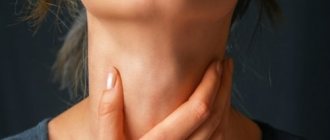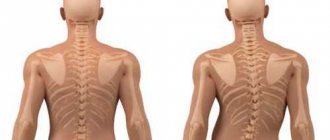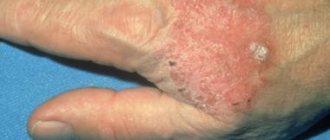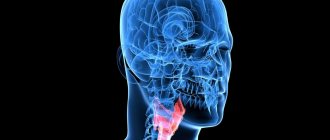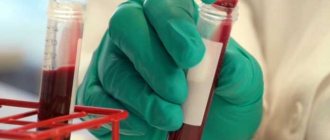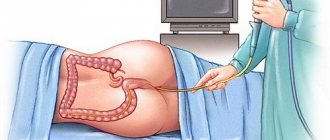Causes
Despite the fact that the syndrome has been known for quite a long time (about 150 years), the etiology of the disease has not been fully studied, but it is believed that the most likely causes of Meniere's disease are:
- heredity;
- pathologies of blood vessels;
Meniere's syndrome is a disease of the inner ear.
- head injuries;
- ear diseases;
- infections.
The question of the occurrence of Meniere's syndrome and its causes still remains open. A number of studies in recent years indicate the role of water metabolism disorders in the development of the disease. This leads to increased fluid content in the inner ear.
Prevention methods and prognosis for the disease
With timely diagnosis, an orthopedic course is prescribed, which reduces the child’s chances of becoming disabled.
Epiphyseal dysplasia does not threaten or shorten life. A number of complications and severe forms of the disease only aggravate the patient’s condition, affecting the functioning of internal organs. An abnormality of the endocrine system can complicate the condition. It is impossible to prevent the occurrence of the disease. Therefore, the only thing that takes place as prevention is timely consultation of future parents on medical and genetic issues and recommendations for pregnancy management.
Mechanism of disease development. Symptoms
The pathology is characterized by a significant increase in the amount of endolymph, a viscous fluid that fills the cavities of the inner ear. As a result, intralabyrinthine pressure increases.
The labyrinth of the ear is the most complex part of the organ. It is presented in two parts:
- Bone. It is a capsule made of compact dense bone. It is divided into the vestibule, semicircular canals and cochlea.
- Membranous. This part is suspended in polylymph, which fills the bony labyrinth. The membranous labyrinth, in turn, is also filled with fluid - endolymph.
Due to pressure on other parts of the ear, hearing problems occur.
The labyrinth of the ear is the most complex part of the body
Since the ear performs another important function - it ensures the correct position of the body in space, and also maintains its balance, autonomic disorders and coordination disorders are often observed.
Traditional medicine methods
Folk remedies will be a good addition to the basic treatment of Meniere's syndrome. Herbal recipes can be used for a long time. Effective means:
- Dry and crush a small amount of seaweed. Eat the resulting powder every day before bed.
- Wash and dry the hawthorn fruits, chop, 2 tbsp. l. pour 300 ml of boiling water. Drink the drink during the day before meals.
- Cool 200 ml of boiling water to 30–40 degrees, pour in 1 tsp. dried elecampane root, leave for 10 minutes. Strain and drink 50 ml throughout the day.
Article on the topic: Doxy-Chem - instructions for use, indications, composition, release form
Diagnostics
In the presence of signs of Meniere's disease and the absence of purulent infections, diagnosis does not cause difficulties. It does not require additional research.
But sometimes the symptoms resemble a number of other diseases in the initial stages. Differentiation is carried out:
- with hemorrhages;
- tumors of the brain or nervous system;
- injuries;
- otosclerosis;
Otosclerosis can lead to this pathology
- dysfunction of the thyroid gland;
- vasculitis;
- vestibulopathy;
- Barre-Lieu syndrome;
- Cogan's syndrome and some other complex pathologies.
Patients suspected of having the listed diseases require a particularly thorough examination by an otolaryngologist and neurologist.
And additional hardware research includes:
- MRI;
- Electroencephalography;
- Doppler ultrasound;
- Rheoencephalography.
REG rheoencephalography
Mayer's dysplasia
The main symptoms of a type of dysplasia known as Mayer's dysplasia, which affects the hip joints in children, do not differ in significant clinical manifestations, unless complicated by aseptic necrosis in the area of the heads of the hip joints. When examining the child, the general condition looks relatively satisfactory. The baby's growth corresponds to age standards. The physique has the correct proportions, movements in all joints are preserved in the proper volume.
Hip dysplasia
Some patients have a history of aggravating factors in the form of a hereditary predisposition, cases of hip dysplasia in parents or close relatives. When collecting anamnesis, it is often possible to identify complaints of gait disturbances and short-term painful sensations in the hip area.
A clinical examination of children by a doctor makes it possible to detect existing gait deviations; from time to time the child limps. The range of motion in the hip joint is completely preserved in most cases. In some cases, there was a slight limitation in hip abduction or internal rotation.
X-ray examination of the hip joints in children with suspected Mayer's dysplasia revealed a later appearance of ossification nuclei than normal. There is a decrease in size or underdevelopment of the cartilaginous part of the femoral epiphysis. Ossification nuclei appear late; one nucleus or several may appear at once. In some cases, this leads to errors in diagnosis; this condition is regarded as foci of aseptic necrosis of the femoral head. X-ray and ultrasound examinations fail to detect exudative processes in the joint cavity.
At the end of the progression of Mayer's dysplasia, it is possible to detect on an x-ray a formed epiphysis of the femur with an unmarked decrease in its size. The structure of bone tissue and cartilage coating does not have any deviations.
During the period when the child grows up and begins to actively move independently, aseptic necrosis of the femoral head, which is changed as a result of the pathological process, may develop. This led to significant changes in existing symptoms. Children complained of pain in the lower extremities. Upon examination, a gait disturbance was detected, lameness periodically appeared, which gradually progressed in frequency and intensity. Lameness is associated with intense exercise. The change in gait occurred according to the “duck” type. The muscles of the gluteal regions were hypotrophied, hip abduction was difficult.
Forecasts
The future course and forecasts vary. The disease can be divided into several stages:
- early - oddly enough, the most unpleasant;
- progressive;
- late.
A prognosis of the disease can be made based on the later stages. Prediction is difficult due to the fact that the disease is characterized by periods of exacerbations and remissions.
With early detection of pathology and strict adherence to all doctor’s recommendations and preventive measures, Meniere’s syndrome has a more favorable prognosis.
Over time, the patients' condition tends to spontaneously stabilize. However, many patients experience a decrease in hearing acuity.
Diagnostic tests
To make a diagnosis of epiphyseal dysplasia of the hip joint, the following examinations will be required:
- A thorough history taking, indicating pregnancy complications in the mother and a family history.
- Clinical examination to identify characteristic symptoms.
Examination of a child's joints - X-ray examination of joints and spine. It is carried out after the child reaches the age of 3 months.
- Ultrasound diagnostics of the hip joint and, if necessary, the abdominal organs and kidneys.
- CT scan.
- Magnetic resonance imaging.
- Genetic examination and consultation with a geneticist.
X-ray and ultrasound examination show a discrepancy between the central point of the femoral head and the central point in the acetabulum.
Treatment of Meniere's disease
The disease must be treated under the supervision of an experienced otolaryngologist. The disease cannot be completely cured. The main task of doctors is to slow down the progression of the disease and increase the time interval between attacks.
If Meniere's disease is suspected, the patient is sent for diagnosis. In addition to studying the patient’s complaints, a thorough examination of the ear is carried out, blood tests are taken, the functioning of the vestibular apparatus (spontaneous nystagmus, balance functions), the degree of hearing loss, etc. are assessed.
At the first stage, treatment is carried out with medication. Clinical methods boil down to stopping attacks and minimizing new exacerbations: during an attack, the patient takes certain medications, and between attacks applies other clinical recommendations of an ENT doctor. But, unfortunately, modern treatment methods cannot affect hearing loss; they can only slow down the irreversible process.
In the most severe cases, in the absence of effect from drug therapy, surgical treatment is used.
Causes of the development of the disease in adults and children
This syndrome is usually found in children between 3 and 16 years of age. In boys, especially those with low birth weight, this pathology is observed 4-5 times more often than in girls. Perthes disease in adults is diagnosed quite rarely, since symptoms and associated disorders occur in childhood.
An adult with a limp may visit a doctor and be diagnosed with the disease in adulthood. But during the conversation it turns out that problems with his leg bothered him in childhood and adolescence.
No single reason for the formation of pathological changes was found. It is believed that a combination of various factors leads to them.
Sometimes newborn babies already have a predisposition to the appearance of the disease against the background of myelodysplasia - hereditary spinal underdevelopment in the lumbar region.
Myelodysplasia - congenital underdevelopment of the spinal cord
With such a disease, the flow of blood to the femoral head is reduced or even interrupted. Due to oxygen deficiency, tissue necrosis occurs, which contributes to the appearance of aseptic necrosis - cell death without the influence of infectious agents or the inflammatory process.
Myelodysplasia is sometimes not detected until old age, but when combined with other ailments - infectious diseases, injuries - it contributes to the occurrence of orthopedic problems.
The development of the disease can be caused by injury to the hip joint during falls, accidents, as well as increased loads and weakness after acute infectious diseases. It is precisely because of this factor that in case of manifestation of inflammatory diseases, bed rest is recommended.
Other reasons that increase the risk of developing the disease:
- metabolic disorders, especially phosphorus and calcium metabolism, on which the formation of skeletal and cartilaginous structures depends;
- dystrophy, rickets;
- complications of diseases caused by viral or bacterial agents, for example, acute respiratory infections;
- hormonal imbalances in adolescence;
- passive smoking;
- low birth weight of the newborn.
There is a possibility of inheritance of the disease due to genetic disorders of the anatomy of the hip joint.



